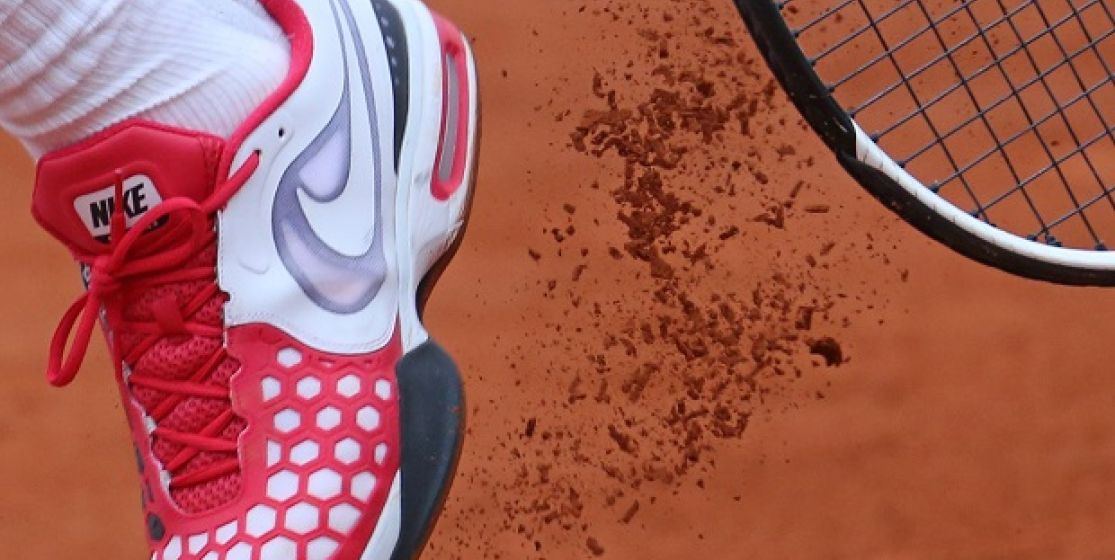White socks turning orange, dust flying in the stands, skidding galore and marathon rallies: the three-month-long clay court season from April to June offers unfailing references. It also allows very specific characteristics to thrive. Discover the king of clay’s identikit according to WeAreTennis.
The physique of… Thomas Muster
« Thomas Muster is Nadal’s son » Former coach of Amélie Mauresmo, Loïc Courteau says that "the physical dimension has become paramount on clay courts from the 90s" with the Austrian as the reference for movement "always more muscles". In 1995, "Musterminator" who looked like a gladiator, won 40 consecutive victories on clay courts, including the French Open where he dominated the frail Michael Chang in the final, as a handover of power.
The stamina of… Guillermo Vilas
If marathoners are now in number on the ATP Tour, it was not yet the case in the 70s, at the time of Guillermo Vilas. "The Argentine is one of those rare phenomena of tennis that could make a winning streak last on this very demanding surface" says Patrice Hagelauer, who knows what he’s talking about: he was Yannick Noah’s coach when he won the French Open in 1983. Workaholic, Vilas has built his success on clay courts - including an exceptional year in 1977 marked by his only victory at Roland Garros – mostly owed to his endurance. Never forget that the man once said that he was able to stay on a court for 7 hours without getting tired.
The topspin of… Björn Borg
Everybody remembers the Swede for his looks, with his beautiful long hair held by his famous headband. But we should never forget that he was first and foremost "the inventor of the topspin" with Vilas. The lift, this effect, "absolutely essential on clay courts to push back the opponent and slow down the game", according to Loïc Courteau. Thirty years ago, they were not many to use it, but it was one of the keys of Borg’s tremendous success in Paris with six titles at Roland Garros to his name. "He managed to adapt to clay perfectly, although he was not a specialist."
The forehand of… Carlos Moya
Before the reign of Rafael Nadal, there have been several seasons when these few months on clay courts were more open, with different kind of players able to showcase their talent. In 1998, for example, Carlos Moya made a fine series Monte Carlo/Roland Garros thanks to its intermediate style: classic characteristics of the tough clay lover specific to Spaniards associated to a formidable strike force and of course his famous forehand. A weapon that he mastered perfectly.
The backhand of… Gustavo Kuerten
The backhand weapon is an opportunity to pay tribute to Brazilian Gustavo Kuerten, three-time winner in Paris and worshiped the public. His assets to charm the spectators? Generosity and a big heart. His strengths to eliminate opponents one after the other? A way of playing perfectly suited to the surface, including his two-handed backhand. "He always managed to hit very hard, with very curved balls that significantly hindered his opponent, remembers Patrice Hagelauer. He was also touching the ball quite late, which made the reading even more difficult."
The baseline game of… Sergi Bruguera
"It’s true that Bruguera was the archetype of the player who likes to play from the baseline, allowing him to return the ball with a strong convex effect." Patrice Hagelauer like all tennis observers knows it: if the expression "Spanish game" may a compliment in football, it has long been synonymous of boredom with regard to the yellow ball. Boredom but also efficiency: Bruguera raised the famous “Coupe des Mousquetaires” twice, and his compatriot Albert Costa raised it once in a substantially identical game style.
The drop shot of… Andy Murray
"Beware, warns Loïc Courteau, if the drop shot is an important weapon on clay, you have to use it wisely, only occasionally." The goal is of course to shake the clay lovers in their habit of playing from the baseline and deceive their vigilance. Easier in theory than in practice... "The drop shot requires an excellent ball feel, says Patrice Hagelauer. Today, they are more and more to use it, which is interesting in the variation of the game: Murray but also Nadal of course."
The creativity of… Roger Federer
"With his intelligence, Roger Federer has successfully adapted to clay courts. His game today is interesting, comprehensive, full of variation." The compliment made by Patrice Hagelauer, also needs nuance: "His only weakness is his backhand slice on high balls. Nadal always manages to make him suffer with this." But with the wide range of effects in his game and his experience, the Swiss remains a strong contender to win every tournament on clay.
The patience of… Mats Wilander
If the first Grand Slam won by Mats Wilander was Roland Garros in 1982, it was not a coincidence: the Swede had everything to enjoy clay courts. The playing style of course, but also the human qualities. "He had a rare intelligence, remembers Patrice Hagelauer. Mats was patient, waiting to exploit any weakness or failure of his opponent." Clay courts don’t suit impulsive players, the long rallies on clay courts may eventually annoy them to the point of making them lose.
The mental of… Rafael Nadal
Last but not least, Nadal could have been included in all previous features. "If you have to make the identikit of the perfect clay court player, it’s simple: it’s Nadal," admits Hagelauer in admiration. Courteau agrees: "He’s the best there’s ever been. And although it is difficult to compare eras and generations, no one can compare to him on clay courts in the history of tennis." His qualities? “His topspin is extremely powerful, he has extraordinary physical qualities and the mental of a warrior." Formidable hitter, Nadal is a beast. He will obviously be the favourite to his own succession again at the upcoming French Open.






